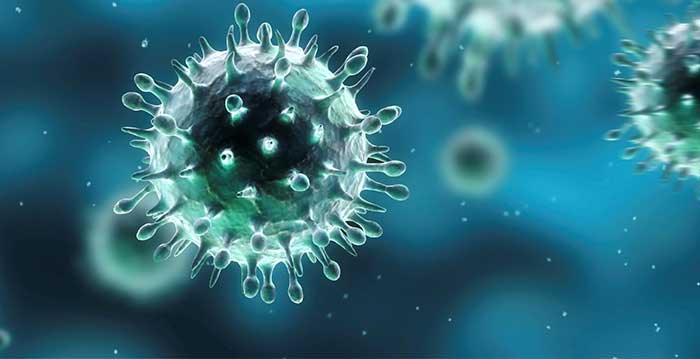Chicken Pox & Shingles

WHAT IS CHICKENPOX?
Chickenpox (varicella) is a common, highly infectious and preventable childhood infection that is found worldwide and is caused by the varicella-zoster virus. It’s most common in young children and is usually mild, but can be very uncomfortable for your child. When adolescents and adults get it, they can become very sick.
Chickenpox is very dangerous for people with immune system problems like leukemia, or for people taking medications that weaken the immune system.
WHAT ARE THE SYMPTOMS?
- Chickenpox begins with a fever, aches and pains.
- Symptoms appear 10-21 days after infection and last about 2 weeks.
- Children are most contagious from 1-2 days before to shortly after the onset of rash. The rash is usually itchy and can make your child very uncomfortable. It appears on the scalp and face, spreading quickly down the body and onto the arms and legs. The rash can also appear on the mucous membranes of the mouth and upper respiratory tract. The spots start as flat pink spots that turn into small water blisters. New spots will form even after others turn into blisters. Some children only get a few blisters, but others can have as many as 500 or more. Blisters dry up and form scabs in 4 or 5 days.
- The blisters can get infected with bacteria and this can lead to scars. Though most of these infections are minor and clear up on their own, some can lead to a serious illness.
- Most children lose their appetite and have a headache during the first few days.
- Children with chickenpox are also susceptible to other viruses, such as pneumonia.
HOW IS IT SPREAD?
Chickenpox spreads very easily. Because it can spread from 2 days before the rash appears, it often spreads without anyone knowing. It can also spread until all of the blisters have scabbed.
- The virus enters the body by the nose or mouth. It usually develops 2 to 3 weeks after contact with an infected person.
- It is mainly spread through the air. The virus can survive in the air for several hours. It can be caught by being in a room with an infected person or in a room where someone with chickenpox has been recently.
- It also spreads from person to person through direct contact with the virus. You can get chickenpox if you touch a blister or the liquid or wet crust from a blister.
- A pregnant woman with chickenpox can pass it on to her baby before birth.
- Mothers with chickenpox can also give it to their newborn babies after birth.
If a child has chickenpox, it will probably spread to other members of the household who have not already had chickenpox or the chickenpox vaccine. Chickenpox cannot live on objects like sheets, counters or toys.
In most cases, you can only get chickenpox once. This is called life-long immunity as the virus goes dormant after the initial infection. But in rare cases, a person might get it again, especially if they were very young when they had it the first time.
HOW CAN I TREAT CHICKENPOX?
- If your child gets chickenpox, do not give aspirin [acetylsalicylic acid (ASA)] or any products that contain aspirin. Taking aspirin increases the risk of getting Reye's syndrome. This severe illness can damage the liver and brain. If you want to control your child's fever, use acetaminophen (Tylenol, Tempra, Panadol and others).
- Encourage your child not to scratch. Scratching can cause infection from bacteria that get into the skin. Adding baking soda to bathwater can be soothing. Your doctor may recommend a cream to help reduce the itch.
- Infants with chickenpox, and older children or adults with a severe disease, may be treated with antiviral drugs.
- When should I call the doctor? You should call the doctor if a new fever develops after the first couple of days. That is, the fever goes away for a day or so and returns; your child looks ill (not wanting to play, eat or drink), especially if he also has a high fever or has many spots inside the mouth; a chickenpox spot becomes enlarged, red or very sore. Your doctor will decide if your child has developed a bacterial infection that needs antibiotics.
CAN MY CHILD WITH CHICKENPOX GO TO CHILD CARE OR SCHOOL?
Many schools and daycare centres have policies that require children with chickenpox to stay home for 5 days after the rash appears (Public Health Agency of Canada recommendation). The goal is to protect other children from the disease. Unfortunately, this does not stop chickenpox from spreading.
Chickenpox is contagious from 1 to 2 days before the rash appears, and most infectious from 12 to 24 hours before the rash appears. It spreads through the air, not just by direct contact with the rash. If your child is too sick to take part in regular activities or if he has a fever, he should stay home. For mild cases (low fever for a short period of time and only a little rash, less than 30 spots), children can go to child care or school if they feel well enough to take part in regular activities, and if the child care centre or school permits.
There are numerous people to whom varicella can be life-threatening. This includes newborns, people with depressed immunity and individuals with serious illnesses like cancer. Therefore Health Canada recommends keeping infected children away from school or public places until the last lesions have scabbed over.
Information was shared from the Caring for Kids - Canada's Pediatricians Website and the Public Health Agency of Canada Website.


Please provide your question and email address in the fields below.
Your question has been successfully submitted.
CloseThank you.